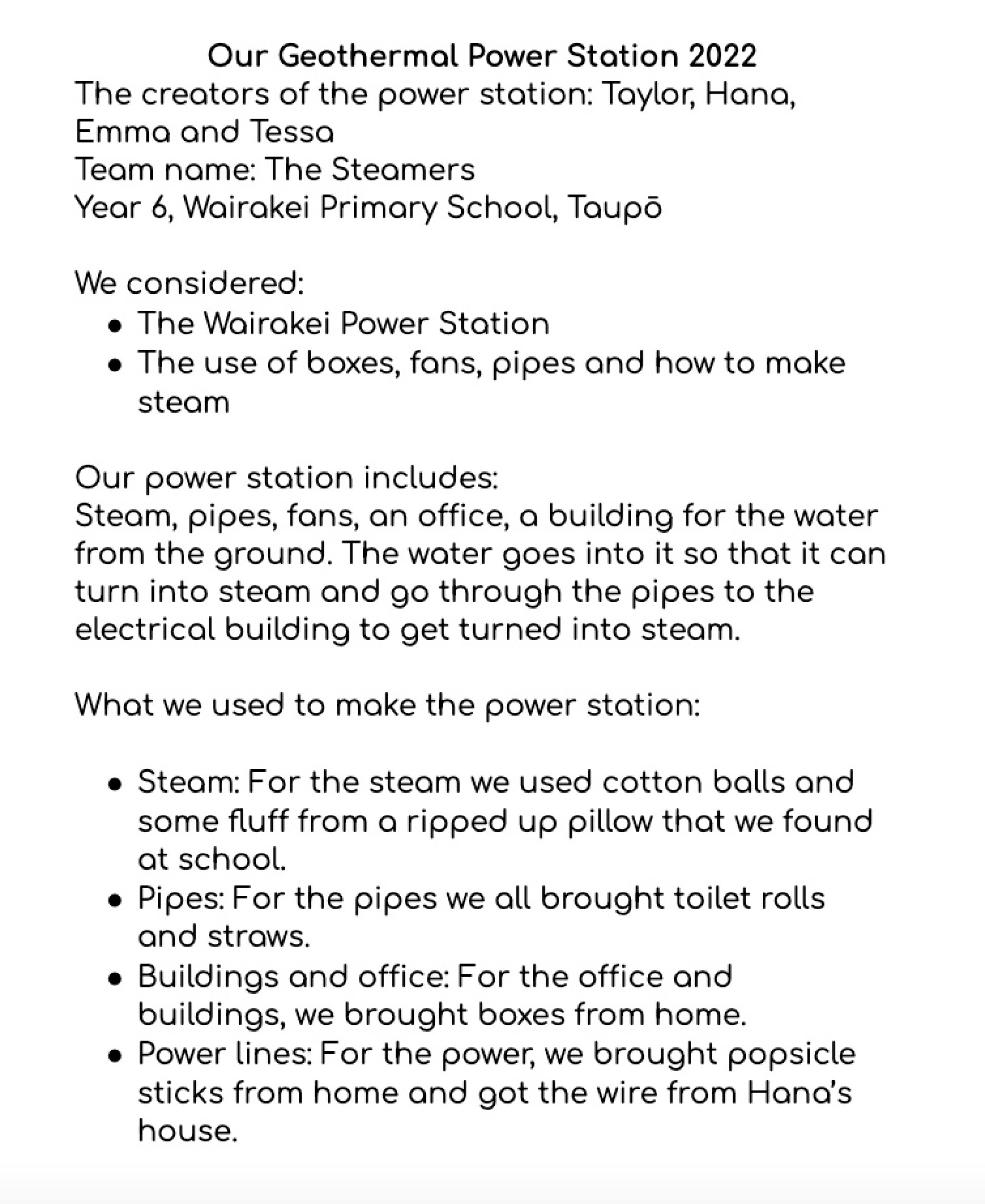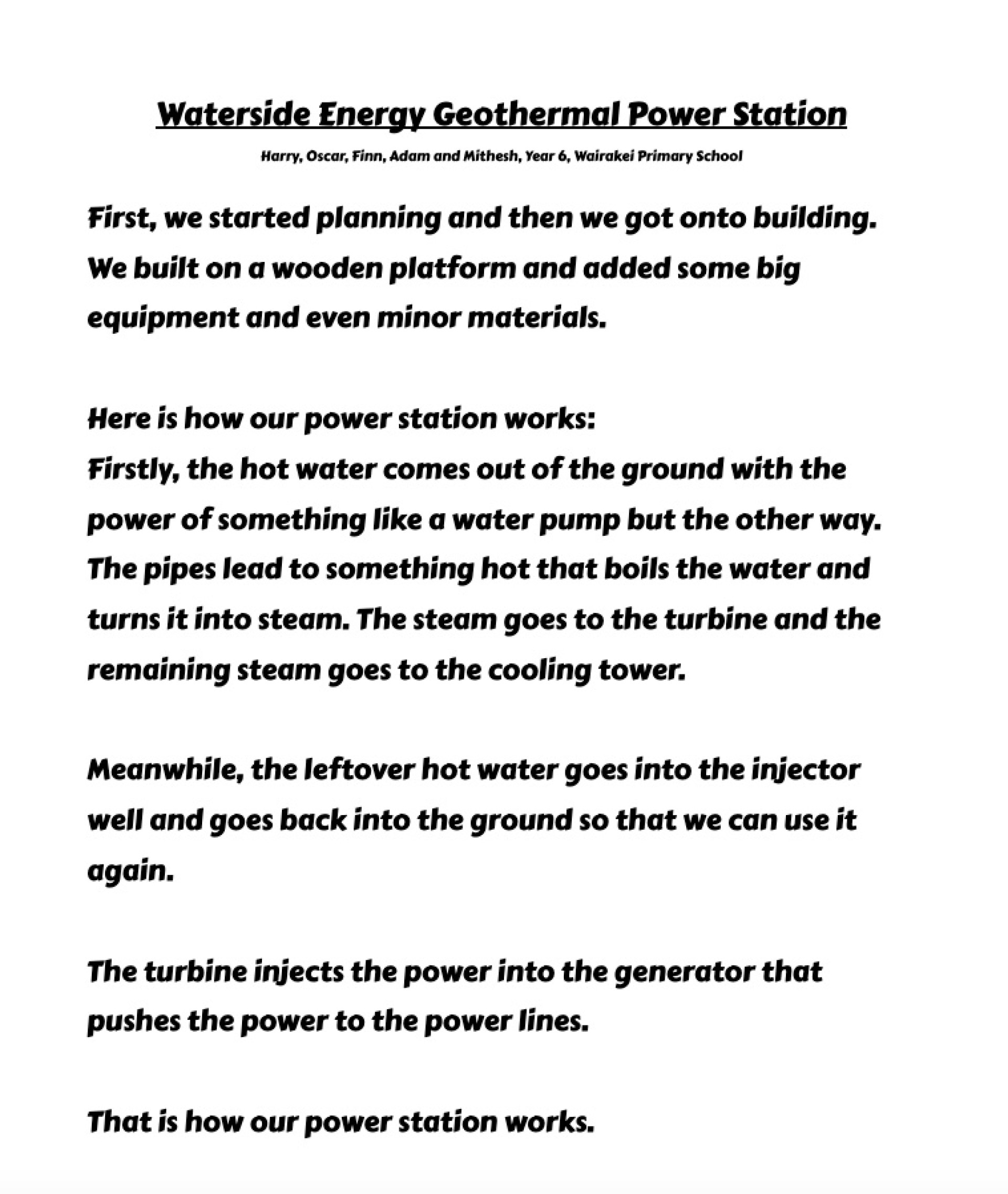Not only do these power stations feature models with steam, the learning is STEAM, too. In this case, the acronym STEAM stands for science, technology, engineering, art and mathematics. All of these learning areas are incorporated as students work in teams of at least four to develop their model, showing their shared understanding of how Geothermal power stations operate.
Two teams were particularly dedicated to making intricate models. In the photos and videos, you might be able to spy working fans (thanks to USB plugs and Chromebooks), a motor, and a small water pump connected to pipes, demonstrating heat being taken from underground and then cold water being injected back into the reservoir. One team made clever use of facial steamers to simulate steam.
Planning is involved in designing the power stations. Art also plays a role. Students develop ideas in response to a variety of motivations, observation, and imagination. Many visual features of the power stations are painted, with one group creating a hill for the power lines using papier-mâché.
Key competencies come together in a project like this. Students being able to manage themselves (and normal class expectations), participate and contribute in a helpful way, and use thinking skills are all crucial to successful collaboration.
It was fun to make but hard to come up with the idea of what it would look like. We did a plan. We drew it out. The finished product looked similar to what we drew but we added some more detail.
It was challenging and fun. Coming up with a good idea and putting everything together were the challenging parts. To come up with the idea we drew a picture and made a layout and talked about it. We drew on the plywood base and then that was our layout. Sometimes deciding where things would go was the hardest part. We had some people join our team at the end and they helped us finish on time.
One of the hard things was making the things separately and then using the hot glue and quickly putting them together. We couldn’t do it near the glue so we had to rush while the glue was still hot. A good thing about it was having enough time to do it. Also we were able to recycle quite a few things we wouldn’t normally.
I liked building it because I like organising things. I brought a lot of things from home to recycle. It was sometimes difficult to work with other people because we had to decide on a lot of things. We did compromising, for example, if I do this, you can do that. We researched how the power station worked and it was very hard to find the right information about how the power station worked. We used a picture and drew our own plan.
I would like to do this project every year. We needed a bit more time because we didn’t quite finish on time. My group ditched the idea of covering the fans a bit more so it looked a bit unrealistic. Overall, I was happy with what we did and there was a lot of electronics in it. Dad and I went to the hobby shop and got a motor and a gearbox. We used polystyrene for the turbine and then it looked like steam was going through it.
I thought it was an exciting project and a good experience. I liked the building and the painting. Everyone got along well. It was a rush to finish it. If we had a bit more time, we would have done another coat of paint on everything to fill in the gaps. I did research at home and on my Chromebook to find out how the power station worked.



Comments are disabled for this post.